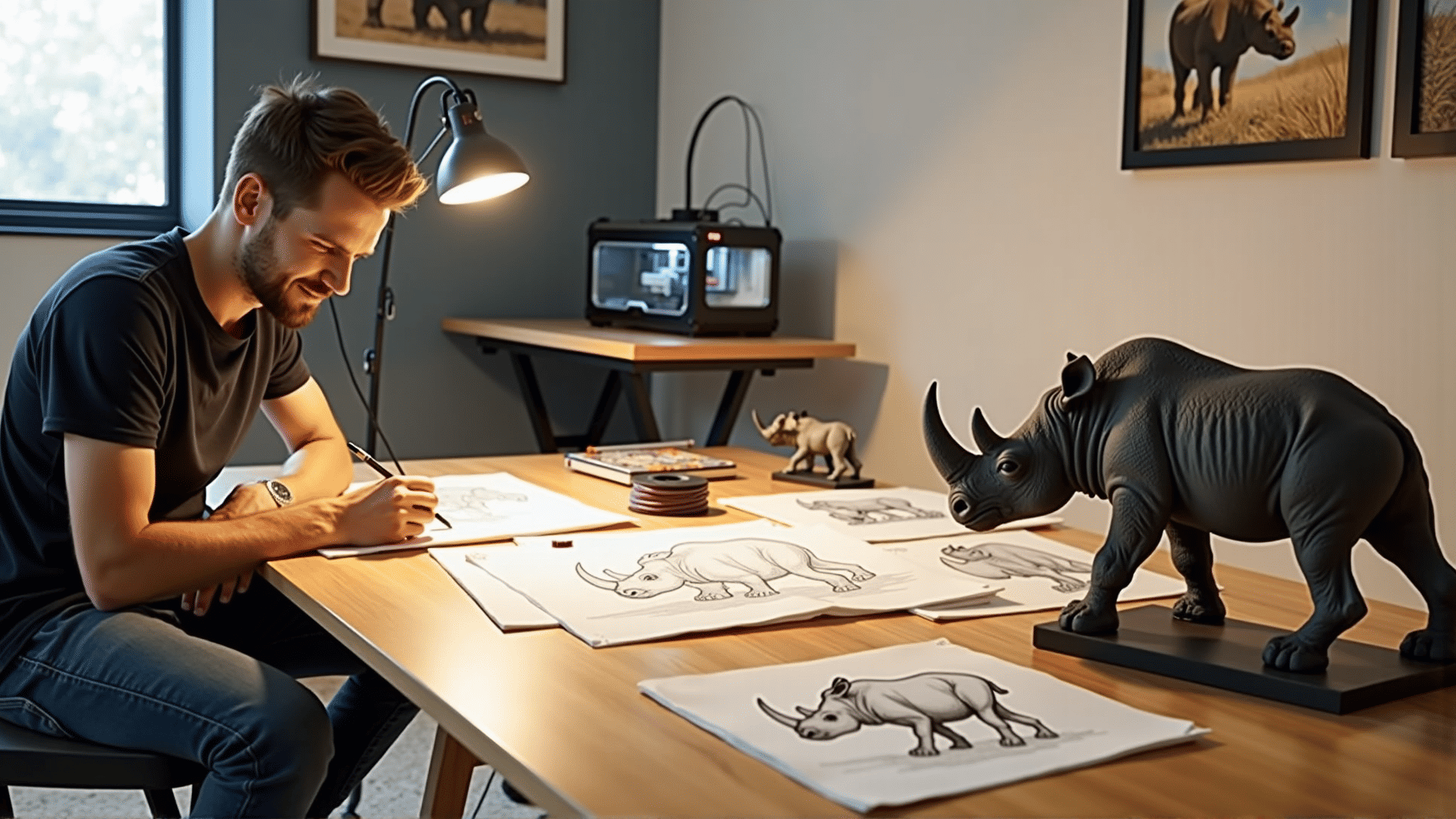The journey of transforming a simple concept of a rhino model into a detailed sculpture is a testament to the wonders of modern technology, specifically state-of-the-art 3D printing techniques. This process, intricate yet rewarding, involves a series of meticulous stages that merge creativity with precision engineering.
The journey begins with the conceptualization phase. This is where the idea of the rhino model takes its first form as a sketch or digital illustration. Artists and designers collaborate closely, drawing inspiration from the natural world to capture the essence and iconic features of the rhinoceros. This phase is critical, as it lays the foundation for the model by determining the posture, scale, and intricate detail that will be brought to life in the final piece.
Once the concept is finalized, the technical work begins. The sketch is transformed into a digital 3D model using advanced modeling software. Designers utilize detailed reference images and anatomical studies to refine the model, ensuring it captures the realism and texture of a real rhinoceros. This stage demands a keen eye for detail and an understanding of digital sculpting tools, as every curve and contour must be meticulously sculpted to achieve lifelike accuracy.
With the digital model complete, the next phase involves preparing it for 3D printing. This involves slicing the 3D model into layers, setting parameters such as resolution, and selecting the appropriate materials. The choice of materials is crucial, as it affects the durability and finish of the final sculpture. Popular materials include resin for fine detail, or composite materials for larger models that require robustness.
The actual 3D printing process is where the concept begins to physically manifest. The printer meticulously lays down material layer by layer, faithfully recreating the digital model in tangible form. Depending on the complexity and size of the rhino model, this stage can range from several hours to days. Throughout the process, precision is paramount, as even minor errors can disrupt the integrity of the final sculpture.
Once printing is complete, the sculpture undergoes post-processing. This involves removing any supports, sanding rough edges, and applying finishes to achieve the desired texture. Artists may choose to hand-paint details to enhance realism or apply custom finishes that highlight specific features of the rhino, such as its skin texture and natural coloration.
The final phase encompasses quality control and presentation. Each sculpture is meticulously inspected to ensure it adheres to the highest standards of craftsmanship. Once approved, it is ready for display, serving as an impressive testament to the seamless fusion of art and technology.
In conclusion, the journey from concept to creation of a rhino model using 3D printing is an intricate dance between creativity and technology. It showcases the limitless potential of modern techniques to capture and recreate the beauty of the natural world in exquisite detail. This process not only highlights the skills of artists and technicians but also demonstrates how innovation can bring art to life in ways previously unimaginable.
